Playbook: How to Boost Meeting Attendance with Contact-Level Ads
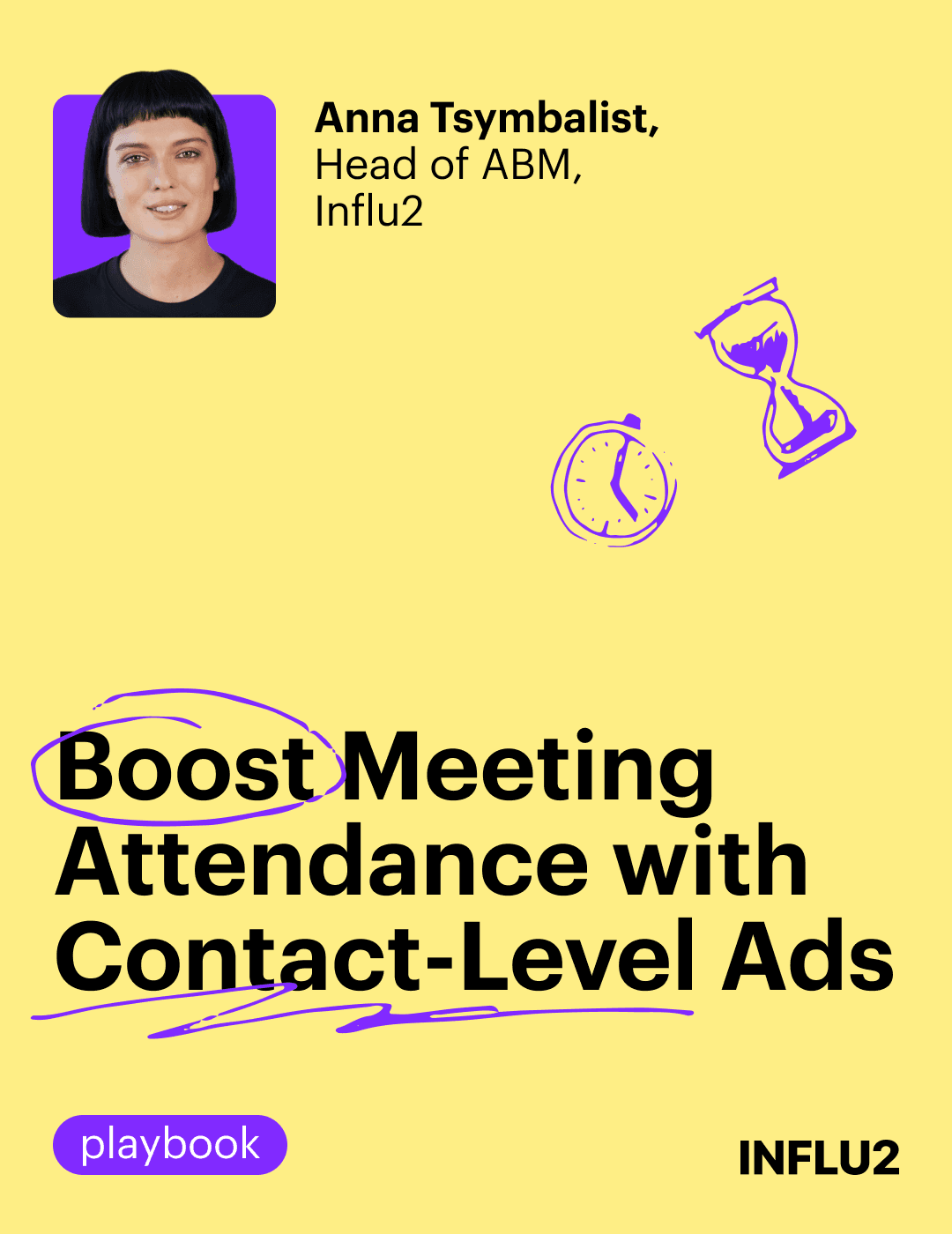
Imagine this: Marketing and sales worked together to finally snag that coveted call with a dream prospect. Marketing pulled out all the stops to convert the account. They targeted the decision-makers with ads, sent engaging emails with high-quality content, and even connected at industry events. On the other side, the sales team prepped, researched, and crafted the perfect pitch. But here’s the harsh reality: Excitement fades, schedules shift, and before you know it, your meticulously planned call sits empty. Sound familiar? The truth is that all decisions have an inherent impulsiveness. One moment, we’re fired up; the next, our minds wander. That’s why capturing the initial spark and fanning it into action is crucial.
Let’s face it: Chasing down prospects for meeting confirmations isn’t exactly a GTM team’s favorite pastime. (Plus, who has the time?)
In fact, marketing teams lack the tools or processes in place to have a real influence on the exact prospects who sales are expecting on the call. Account-based advertising approach doesn’t offer enough reporting, leaving marketers guessing whether they’ve managed to reach the right person at the right time.
The grass is actually a lot greener on the contact-level-advertising side of the ABM.
Here's how you can set up an automated evergreen ad campaign that will help you gently remind prospects about their decision to accept the call—and the value waiting on the other side of it—ensuring they show up excited and engaged.
Here’s how we do it, using our own product
Step 1 – Put a face to the name and spark pre-call excitement
Your go-to-market team worked really hard to get this call. At this point, your prospect probably has no idea who they are going to have a conversation with. They won’t remember what other amazing companies you work with, and there’s a chance they are so swamped that they could deprioritize this call altogether.
But what if you could keep this initial spark that made them say “yes” to the call alive? That’s what we do at Influ2 using our own ad technology, and you can do it too.
Once the call is scheduled and assigned to one of our AEs, we automatically launch ad campaigns to introduce a dedicated AE to potential customers.
We literally put the faces of our AEs on the banners. Here are a couple of examples:
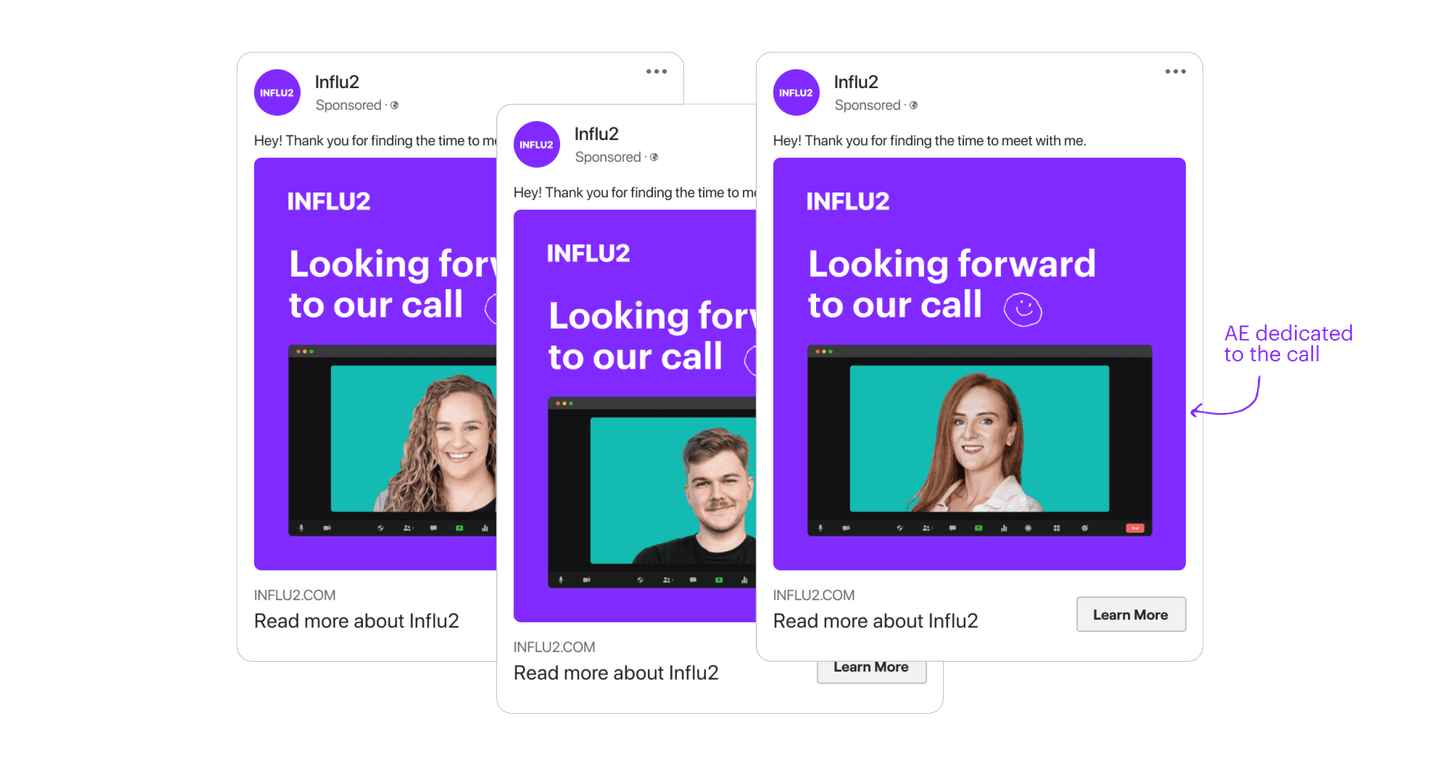
After a prospect clicks on an ad, we direct them to a page featuring the same AE they saw on the banner. We recommend adding a link to the AE’s calendar, along with a couple of relevant case studies and additional product or service content, to the landing page:
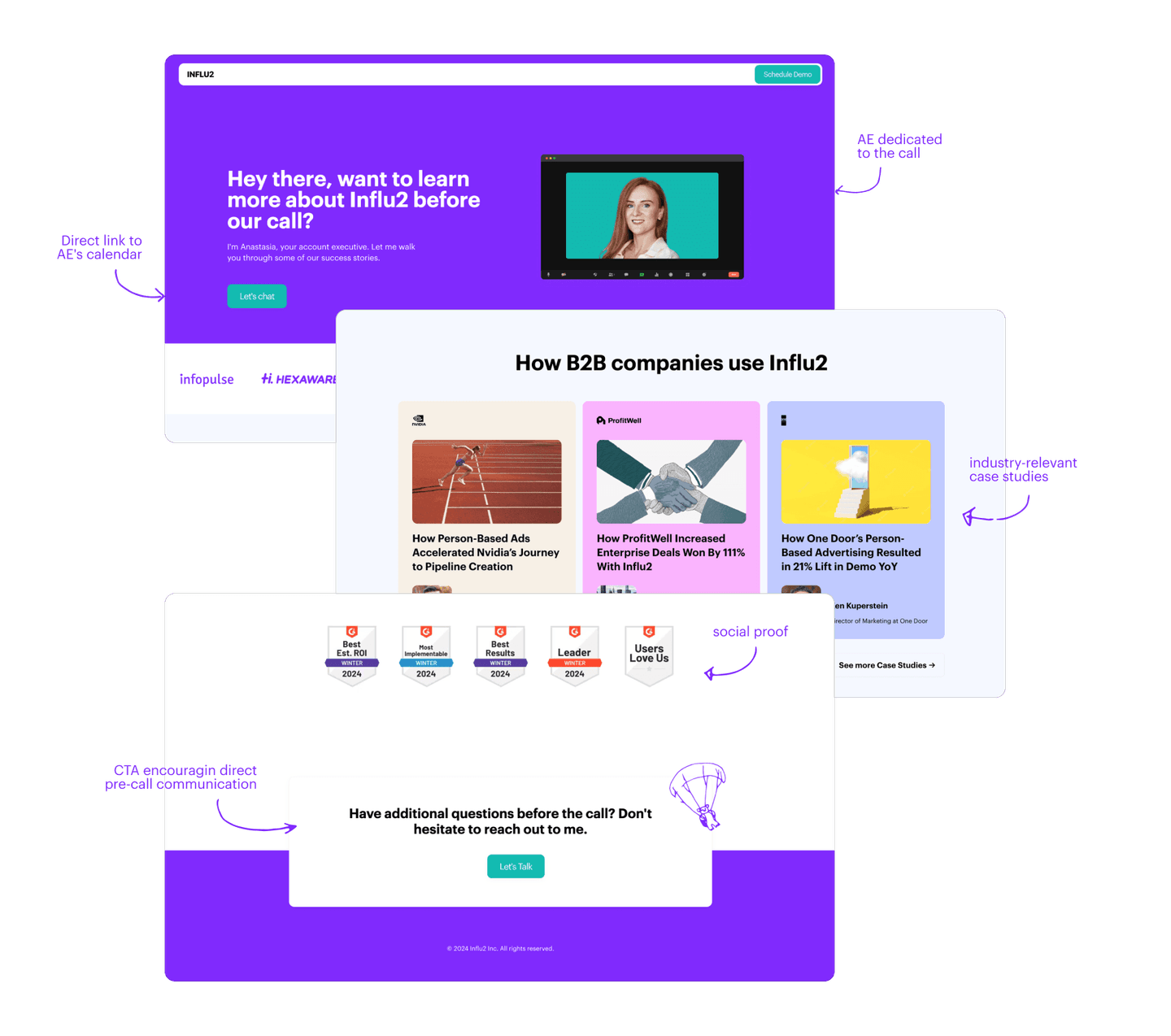
We figured that following this approach, we influence the call in many ways:
- Prospects see a real person, not just a faceless company.
- They get to see success stories from similar businesses.
- There is a direct line to the AE for addressing any pre-call concerns.
- The ad serves as a timely and friendly nudge about the upcoming call.
This tactic not only increases show-up rates but also sets the stage for a more successful and engaging call for both parties.
TIP: Consider showing some strong trust content to the rest of the buying group at this stage.
Step 2 – Build an automation flow in your CRM
The technical side of this play makes it work beautifully. Here’s everything you need to know to recreate it.
The Influ2 platform can automatically pull contacts from your CRM and add them to your target audiences. But you need to “tell” the platform which contacts you’d like to target with what messaging. So, you have to assign contact roles to the contacts in your CRM. You or your sales or ops team probably knows how to do this. If not, our CS team is happy to help:)
In our case, each time the opportunity is created, we assign a contact role to the decision-makers we’d like to target. Then the CRM automatically pulls these people into the “Show Up” campaign for each dedicated AE.
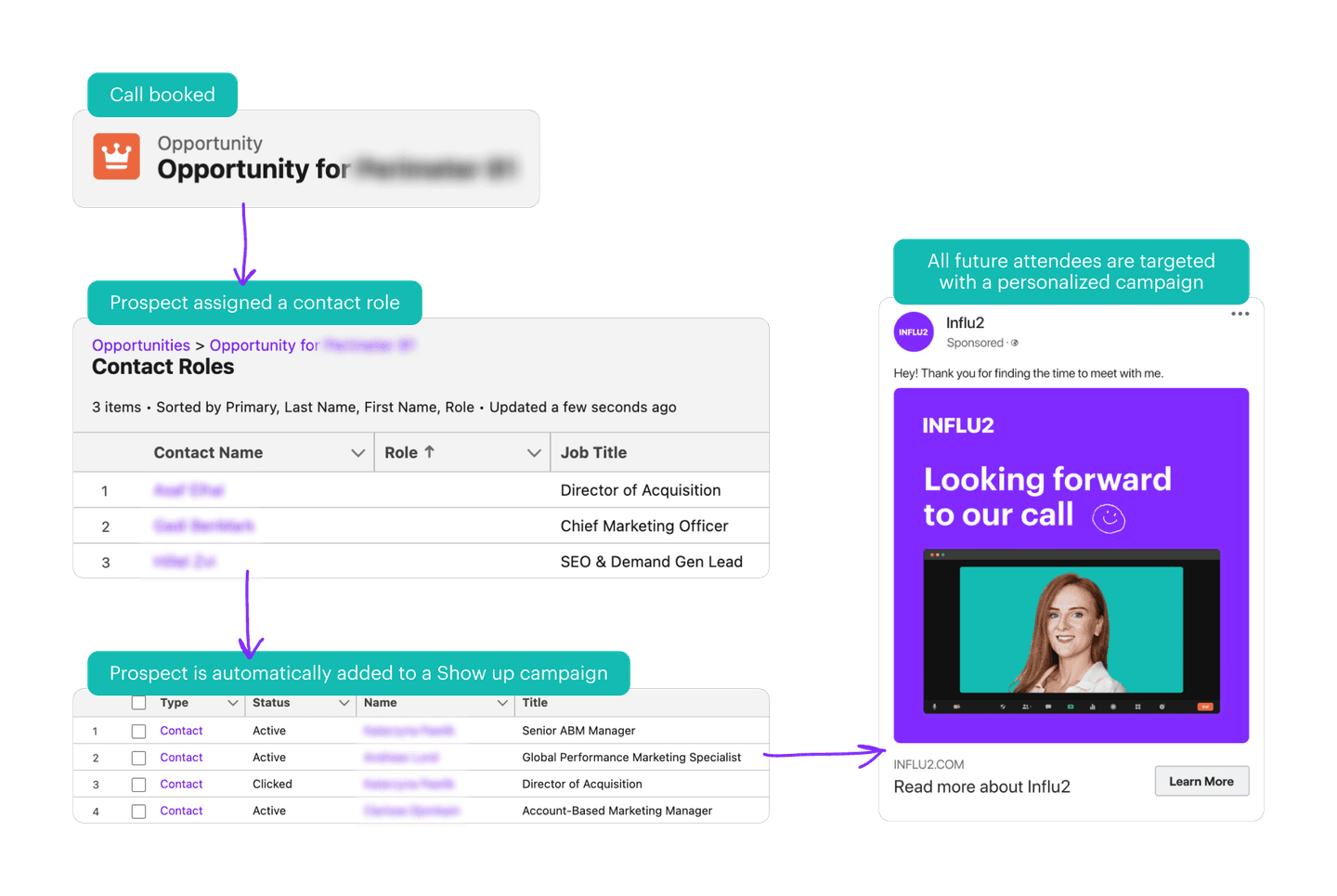
Once all is set up, this self-service campaign empowers sales reps to independently manage the “Show Up” targeting, freeing up marketing resources to focus on other initiatives. While the initial setup requires some effort, the campaign operates as an evergreen solution and delivers an impressive show-up rate boost with minimal ongoing marketing involvement.
TIP: To make the campaign even more sophisticated, try segmenting your audience based on factors like geography, industry, job titles, and the value propositions that initially attracted them.
Step 3 – Plan and design your next steps
Don’t forget to think through your next steps for prospects who:
1. Do show up to your call
Yes! Your team has nailed the intro call or demo, connected with your prospect, and sparked their interest. Now, while the excitement lingers, it’s time to shift gears and expand your focus. It’s time to expand your reach to the entire buying committee: a network of influencers, stakeholders, and gatekeepers.
Here’s where your next ad steps come into play. Just like you’ve built the show-up rate campaign, you can design an automatic ad journey for the entire buying committee based on a range of chosen factors. We recommend paying attention to the pipeline stage and industry.
2. Don’t show up to your call
Hey, it happens. Not every prospect will show up for their scheduled call, and guess what? It’s not you; it’s them. Shifting priorities, unexpected deadlines, or even a pesky case of the Mondays can trip up even the most interested individual.
Here’s where your no-show campaign comes in. This is your opportunity to reignite their interest without being pushy. A quick product tour video, case studies featuring similar businesses, or a personalized offer demonstrating how you address their specific concerns can jog their memory and remind them of your value. Think of it as a gentle nudge back on the right track.
Step 4 – Measure your success
Yes, influence is important, but measuring it and getting credit is what we all really care about. In an ideal world, all prospects would be fascinated by the content you’re showing them.

But reality bites: Some calls happen too soon for the prospects to see the ads. Some prospects simply don’t browse the web enough. The upside? This creates a control group not influenced by your efforts, allowing for comparison.
Overall, here are the results we’ve tracked:
When we compared targets who engaged with our “Show Up” campaign to those who were not served any ads, the actual show-up rate increased by 50%. When we considered targets who saw the ad but didn’t click, the average boost was around 15%. Pretty cool, huh?
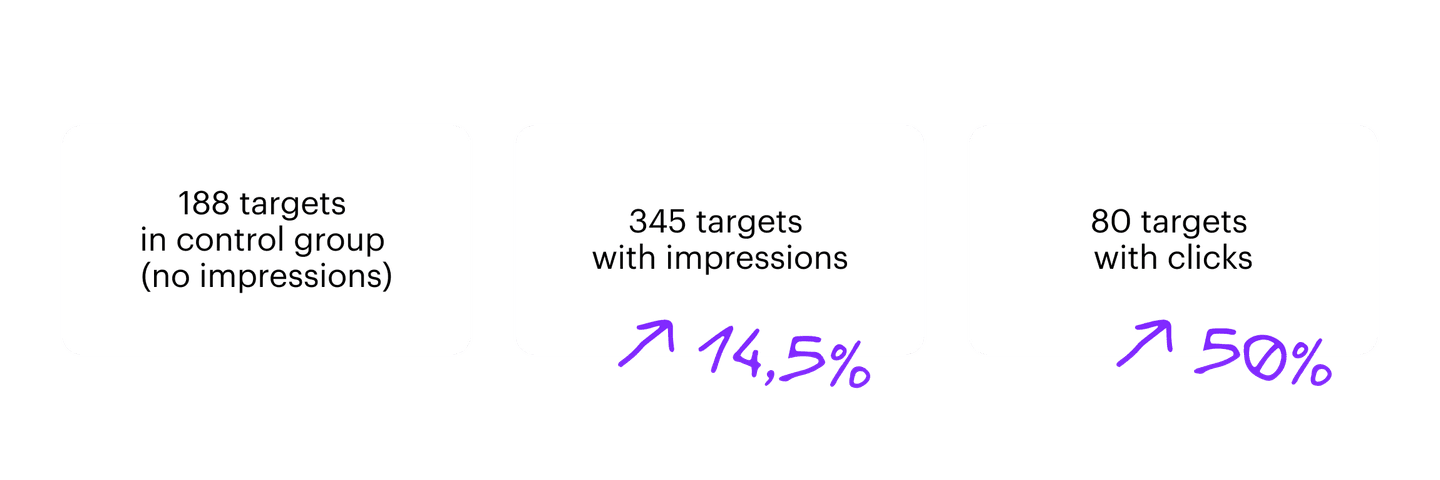
Personalization can take many forms
92% of marketers say customers and prospects expect a personalized experience, but doing personalization at scale is a challenge most marketers have to face without the right tools and technology.
In this playbook, we gave you just one example of how aligning ads with the sales process can help you provide prospects with a personalized experience on a scale. But you can do much more with Influ2.







